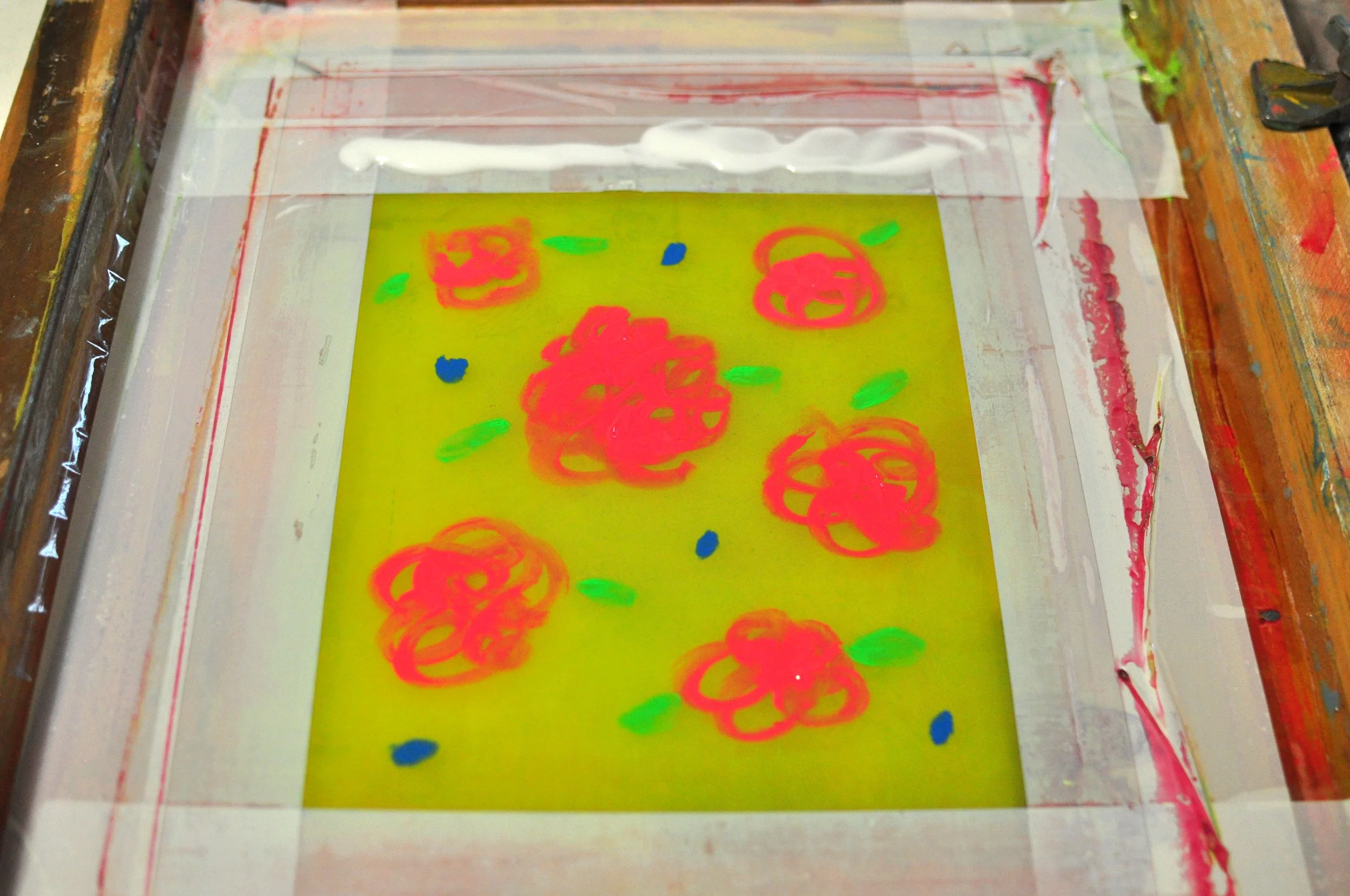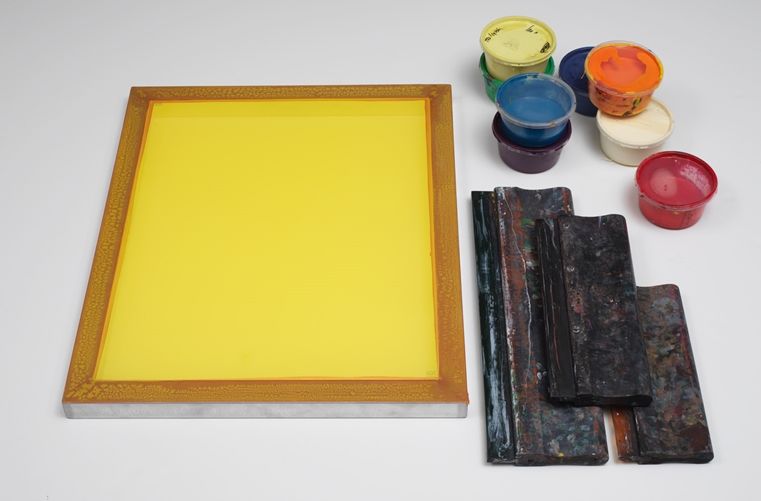The Important Overview to Understanding Screen Printing and Its Versatile Uses
Screen printing has a rich history that goes back to ancient times, evolving right into an innovative technique made use of throughout different industries today. This guide explores the intricacies of the screen printing process, detailing its applications in home, marketing, and fashion decoration - 10:9 Design near me. Recognizing these principles can open up imaginative capacity for both commercial and imaginative jobs. The following sections will expose important ideas and strategies to improve one's screen printing undertakings
The History of Screen Printing
Screen printing has roots that trace back centuries, its development mirrors the technological and imaginative improvements of different societies. Coming from in ancient China, the technique was initially utilized for enhancing fabrics and later spread to Japan, where it ended up being indispensable to Ukiyo-e woodblock printing. The approach changed to Europe in the 18th century, where it acquired appeal amongst artisans and commercial printers. The development of picture emulsion in the 20th century transformed screen printing, enabling even more detailed layouts and greater effectiveness. Artists like Andy Warhol further thrust its popularity, making use of the tool to produce iconic jobs that mixed commercialism and art. By the late 20th century, screen printing had actually established itself as a functional strategy, utilized in vogue, marketing, and great art. Today, it remains to advance, integrating digital technology and broadening its applications throughout different markets.
The Screen Printing Refine Explained
Screen printing transforms artistic visions into concrete designs via a collection of precise actions. At first, a picture is developed and after that transferred onto a screen, typically constructed from great mesh material stretched over a framework. A light-sensitive solution is put on the screen, which is exposed to light, setting in areas not covered by the image. After rinsing the unhardened solution, a pattern is created.
Next, the screen is positioned over the substratum, whether it be textile, paper, or an additional material. Ink is after that pushed through the open areas of the stencil using a squeegee, depositing the style onto the substrate below. This procedure can be repeated for multiple colors, needing separate displays for every shade. The printed thing is treated using heat to guarantee the ink adheres correctly, resulting in a durable, dynamic style all set for use.
Sorts Of Screen Printing Techniques

In addition, specialized methods, such as discharge screen printing, eliminate color from the material to create softer prints, while foil screen printing uses metal aluminum foil to attain a shiny finish (10:9 Design Screen Printing Texas). Each technique offers unique attributes, dealing with various creative needs and manufacturing scales, ultimately increasing the possibilities within the screen printing domain
Applications of Screen Printing in Various Industries

In addition, the signage and advertising and marketing fields use screen printing for creating eye-catching display screens and banners. This approach permits vibrant shades and detailed layouts that catch focus. In electronics, screen printing is employed for applying conductive inks to motherboard, important for element links. Additionally, the home decoration market embraces screen printing to produce distinct designs on fabrics and wall art. In general, screen printing offers as a critical tool across diverse fields, enhancing products with customized and aesthetically appealing graphics.
Tips for Successful Screen Printing Projects
While carrying out a screen printing job, cautious focus to detail can substantially boost the last outcome. Picking high-quality products is crucial; this consists of the screen, inks, and substrates. Making use of appropriate mesh counts can impact ink deposition and information resolution. Preparation is just as essential; comprehensive cleansing of screens and appropriate exposure times assure crisp prints.
Next off, accurate registration is important for multi-color prints. Making use of alignment devices can assist accomplish exact layering. Furthermore, screening prints on scrap materials prior to production aids identify prospective issues without wasting resources.

Often Asked Questions
What Materials Are Ideal for Screen Printing on Material?
Cotton and polyester blends are excellent for screen printing on textile due to their resilience and ink absorption. Furthermore, specialized fabrics like silk or canvas can generate special appearances and surfaces, improving the general layout top quality.
Exactly how Do I Clean and Maintain Screen Printing Devices?
To clean up and keep screen printing devices, one should consistently wash displays with ideal solvents, check squeegees for wear, lubricate moving parts, and shop all items in read more a dry, dust-free setting to extend their life-span.
What Are the Environmental Influences of Screen Printing?
Screen printing can have considerable ecological impacts, including chemical waste from solvents and inks, water use during cleaning procedures, and power intake. Environment-friendly products and lasting methods are important for decreasing these unfavorable impacts.
Can Screen Printing Be Done at Home Effectively?
Screen printing can be successfully done at home with the ideal products and techniques. Enthusiasts can produce high quality prints, though success relies on their skill degree, tools, and understanding of the procedure involved.
What Are the Costs Associated With Beginning a Display Printing Organization?

Starting a screen printing service includes prices for devices, materials, and office. Initial expenses commonly vary from a couple of hundred to a number of thousand bucks, depending on the range, high quality of machinery, and wanted manufacturing capacity.
Screen printing has an abundant history that dates back to old times, evolving right into an innovative method made use of across numerous markets today. An additional technique, rotary screen printing, utilizes round displays, helping with continual printing on material rolls, therefore improving efficiency for large manufacturings. Additionally, specialized methods, such as discharge screen printing, get rid of color from the material to create softer prints, while foil screen printing applies metal aluminum foil to accomplish a shiny surface. In the style field, screen printing is extensively utilized to develop dynamic layouts on clothing, making it possible for brands to display their special designs. Cotton and polyester blends are excellent for screen printing on material due to their toughness and ink absorption.